Why people choose Marbella as their home, and the seasonal delights that make the area so special.
Article by Sophie Gatward-Wicks
For decades Marbella has been a top choice for tourists during the high season (from end of May to early September). Though in recent years, the seasons have virtually ceased to exist. Due to the increasing popularity of the region, coupled with the increase in population, there is no longer a high season and low season, which is most evident in the food and hospitality industries. You only need to walk down the paseo in the middle of January these days to see beach bars not only open, but filled with people.

Marbella has grown in popularity from being a hot-spot summer destination, to a place people want to call home. Undoubtedly, the lionisation of Marbella is rooted in the beautiful climate, but when you stick around for long enough, you soon experience a warmth that goes beyond the heat of the sun.
The light
As simple as it sounds, one of the most magical parts of winter in Marbella is the light. Particularly from November to February, as the sun sits lower in the sky and the difference in atmosphere permits the sun rays to bounce enchantingly off the surface of the Mediterranean Sea at a certain angle. From mid-morning to early afternoon you can often see a reflection of glittery silver sunlight dancing off the blue-toned waves, and as afternoon leans to evening the glorious silver turns to glinting gold. Depending on how far away you are, the sea can look like it’s either covered in shimmering sequins or blanketed in an almost blinding silver shawl of brilliant light.
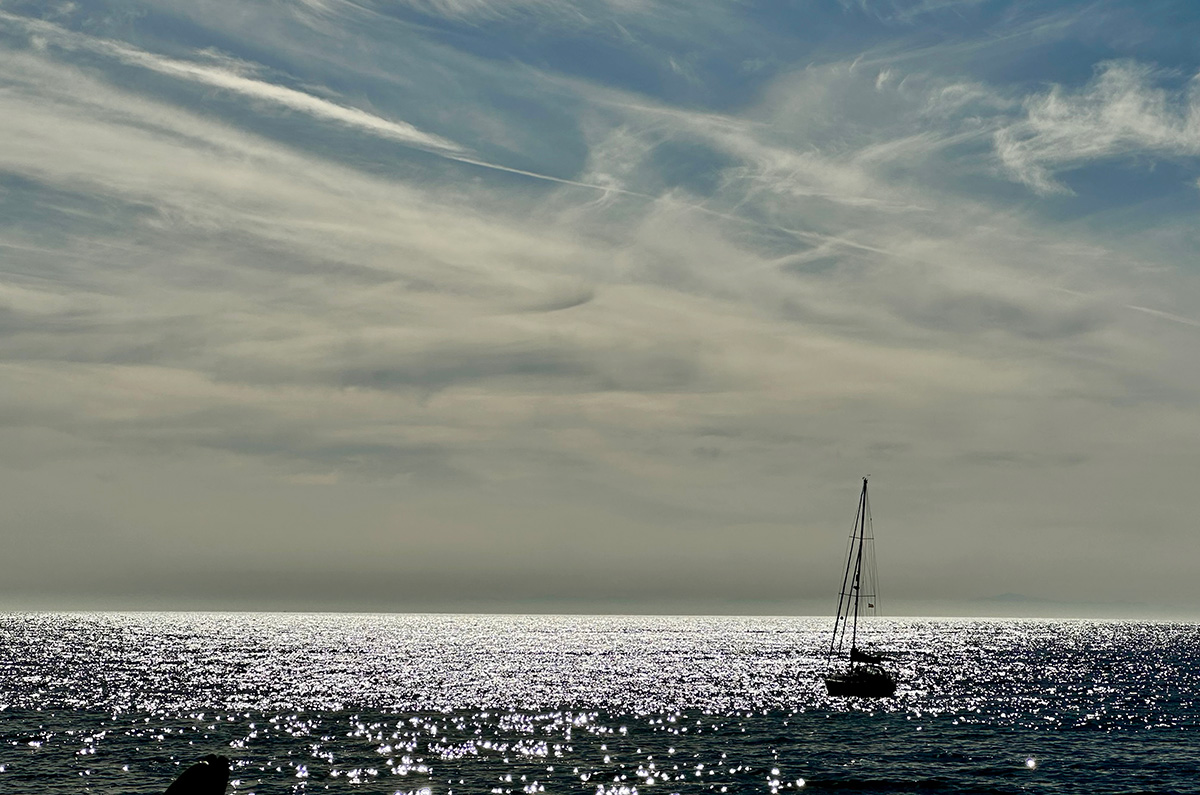
The sunsets at this time of year are impressive yet delicate, spreading hues of pastel pinks, yellows and blues across the sky that meet at the point of the setting sun in gradients of amber and burnt orange. Not to be missed is the gorgeous glow of gold that saturates the western horizon on certain days, which can be caught just before sun down, and is most radiant when seen from the coastline looking towards the Straits of Gibraltar. A walk along the paseo catching sunsets is an evening activity best enjoyed when followed up with dinner in a nearby chiringuito.
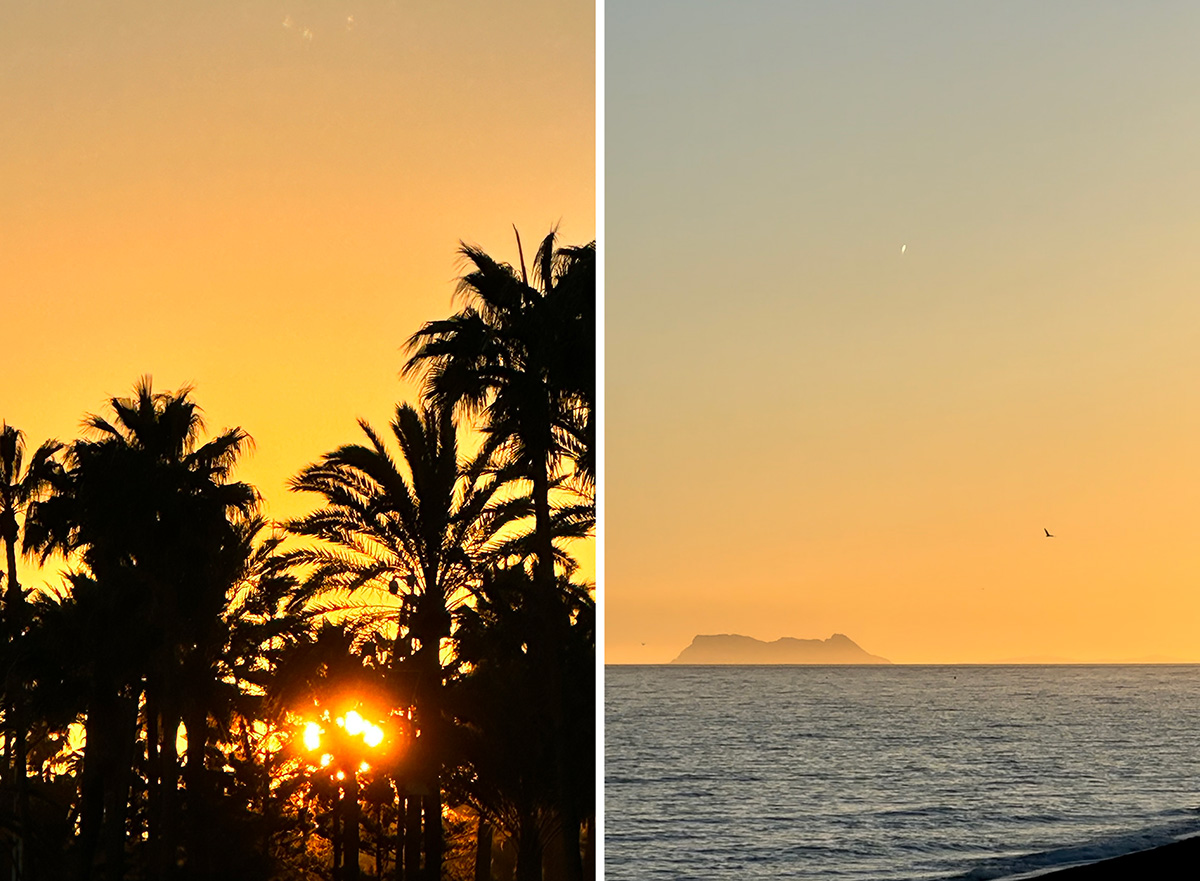
A perfect climate
Romanticising sunsets aside, the Costa del Sol is known to have one of the best climates in Continental Europe, with Marbella enjoying an even better microclimate due to its positioning between the coastline and the base of the Sierra Blanca Mountain range, which shelters it from strong winds and other climatological factors.
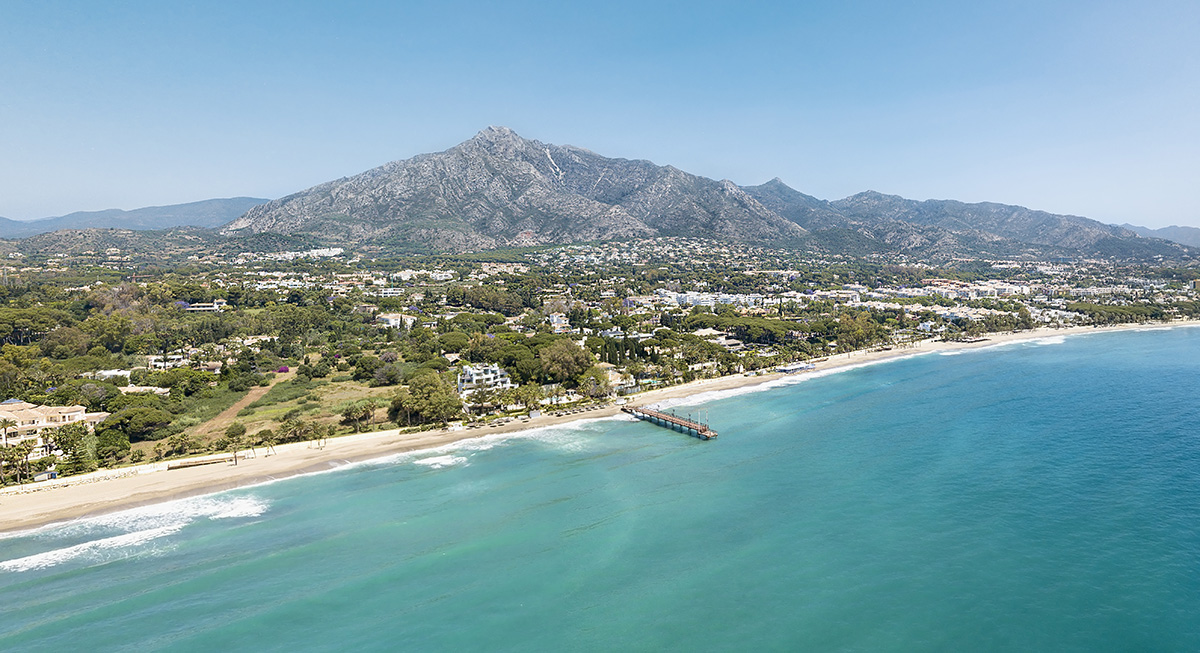
Marbella averages 320 days of sun a year, with winter temperatures often hanging in the mid 20s during the day, and in the coldest month of January, rarely dipping below 10ºC overnight. Just a few weeks ago there were sunny days showing 28ºC in the weather apps, and this past Christmas also brought days of 23-26ºC.
The mild and pleasant winter experienced along the Costa del Sol, but particularly in Marbella, allows for being outdoors comfortably for prolonged periods of time, doing whatever you want at any time of day, without the need to shelter from either end of the extreme weather spectrum. It is the perfect season for hiking without overheating, road tripping without the need to blast the air conditioning, and barefoot walks on the beach where the sand won’t burn your feet. Grab any sun bed at your local beach bar without having to call and book ahead of time (for the most part), as there is simply space for you to be spontaneous.
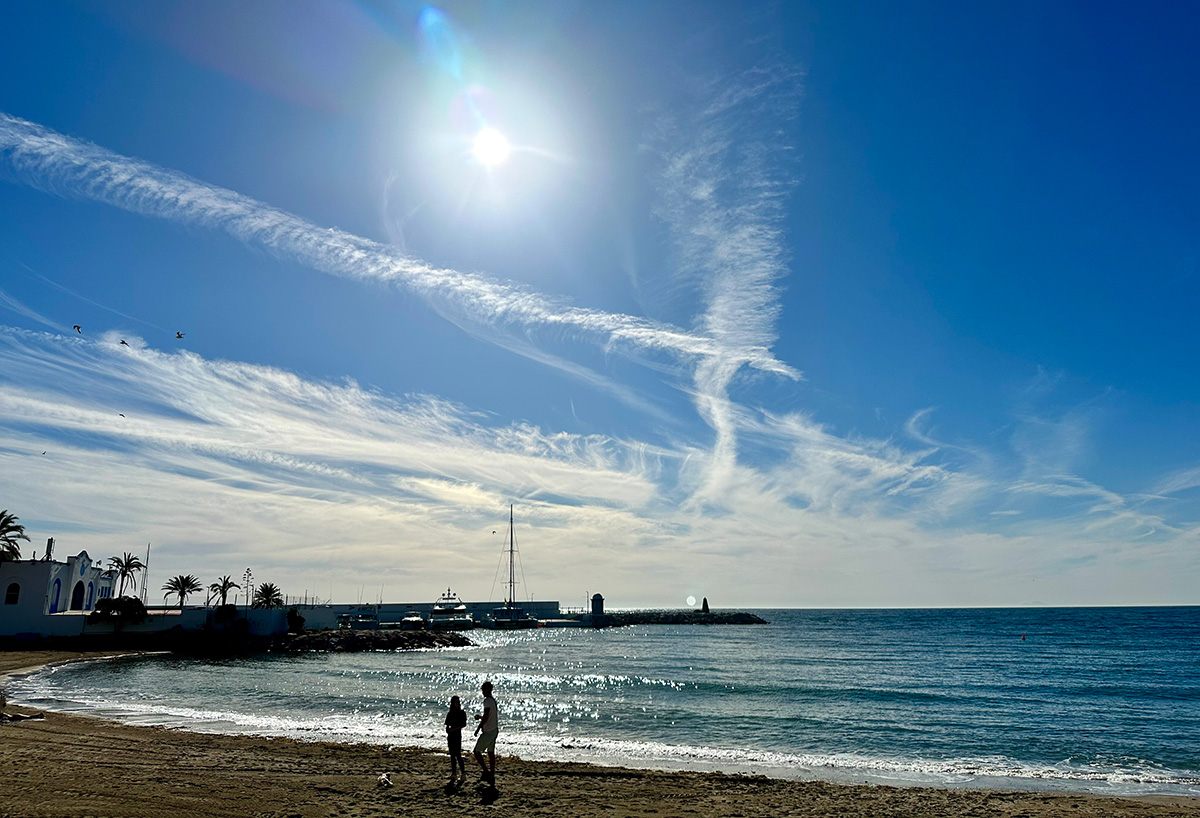
Outdoor activity
Golf is a huge pull for players at this time of year, as the temperatures allow for a longer game, which can be difficult during the hottest summer periods when temperatures can creep into the 40s. There are over 70 golf courses along the Costa del Sol, (colloquially known as the Costa del Golf), with each course having its own unique characteristics.

Tennis players, horse riders, cyclists, footballers, hikers and other sports enthusiasts can take advantage of not only the world-class facilities but the favourable winter weather. Read more about Marbella’s thriving sports scene here.
Celebrating the rain
And when it does rain in Marbella, it often comes in short bursts, seemingly just to clear the air and brush the clouds out of the sky. Of course longer bouts of downpours do happen, commonly around the easter period, but are somewhat of a rarity, and therefore celebrated whenever they do occur.
This attitude is always interesting to observe, especially amongst the expats that once lived in colder countries and didn’t always have such a positive outlook towards dark clouds and rainy days.
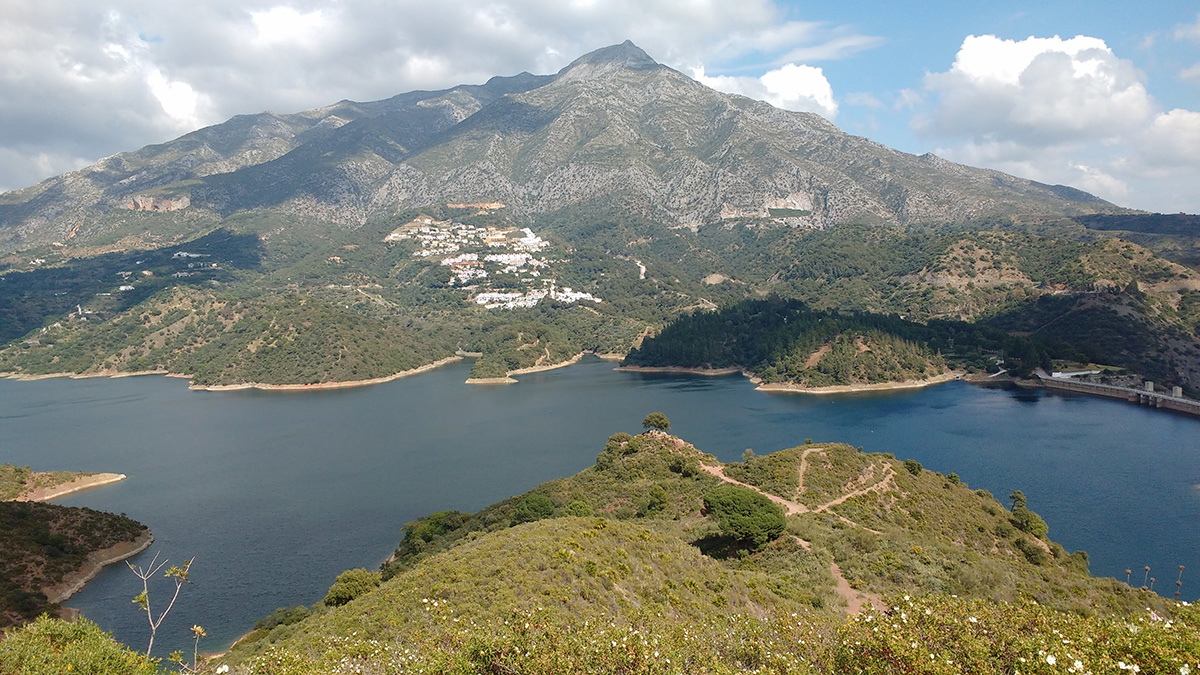
It’s funny how living here can change you in that way. In their home countries, the harsh cold would swoop in as abruptly as their summers end, and the reality of waking up to yet another lifeless, grey day was enough to make them up sticks and move to Marbella. The seasonal woes of colder countries just don’t apply to the Marbella lifestyle, and when you live here year-round, you soon start to celebrate those storm clouds when they roll in.
Sunshine and wellbeing
Talk about the weather may seem trivial, but there is a lot that correlates between the seasons and our wellbeing. The British National Health System states that seasonal affective disorder (SAD), affects around 2 million people in the UK and more than 12 million people across northern Europe. It can affect people of any age, including children. SAD is more than just “winter blues.” About 5 percent of adults in the U.S. experience SAD and it typically lasts about 40 percent of the year.

The American Psychiatric Association reports “SAD has been linked to a biochemical imbalance in the brain prompted by shorter daylight hours and less sunlight in winter. As seasons change, people experience a shift in their biological internal clock, or circadian rhythm, that can cause them to be out of step with their daily schedule. SAD is more common in people living far from the equator where there are fewer daylight hours in the winter.”
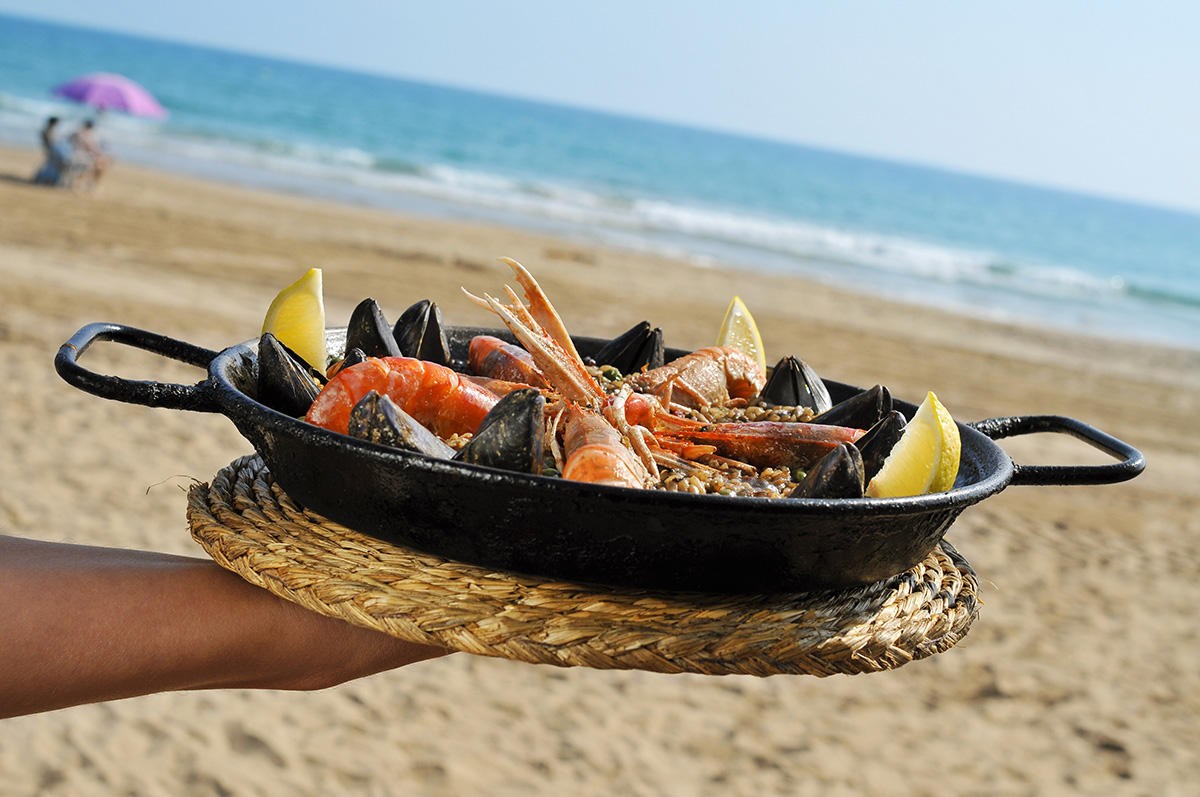
Life can be hard enough without having to combat the elements, and moving to Marbella for many people means leaving behind at least that one stressful aspect that so commonly affects so many other countries. It’s not just a move to a warmer climate, it’s a move for a better quality of life. It’s deciding that life should be enjoyed year round, and the offerings of that idyllic holiday filled with good food, long swims and enriching culture shouldn’t have to come around once a year, it can be with you every day.



































































